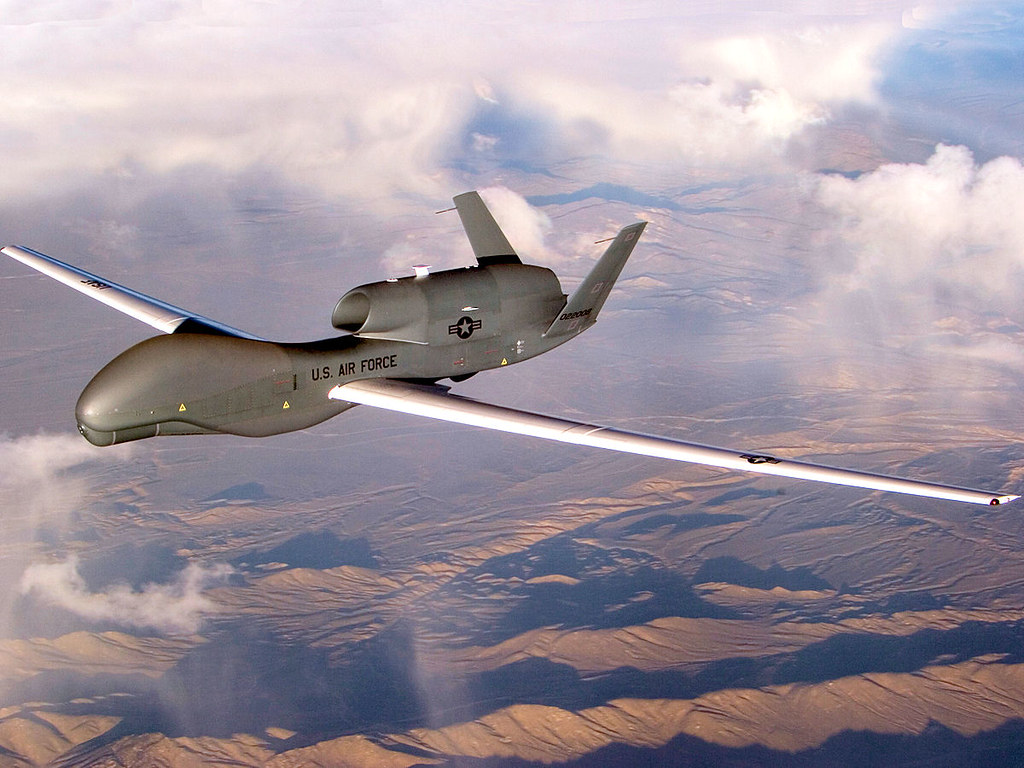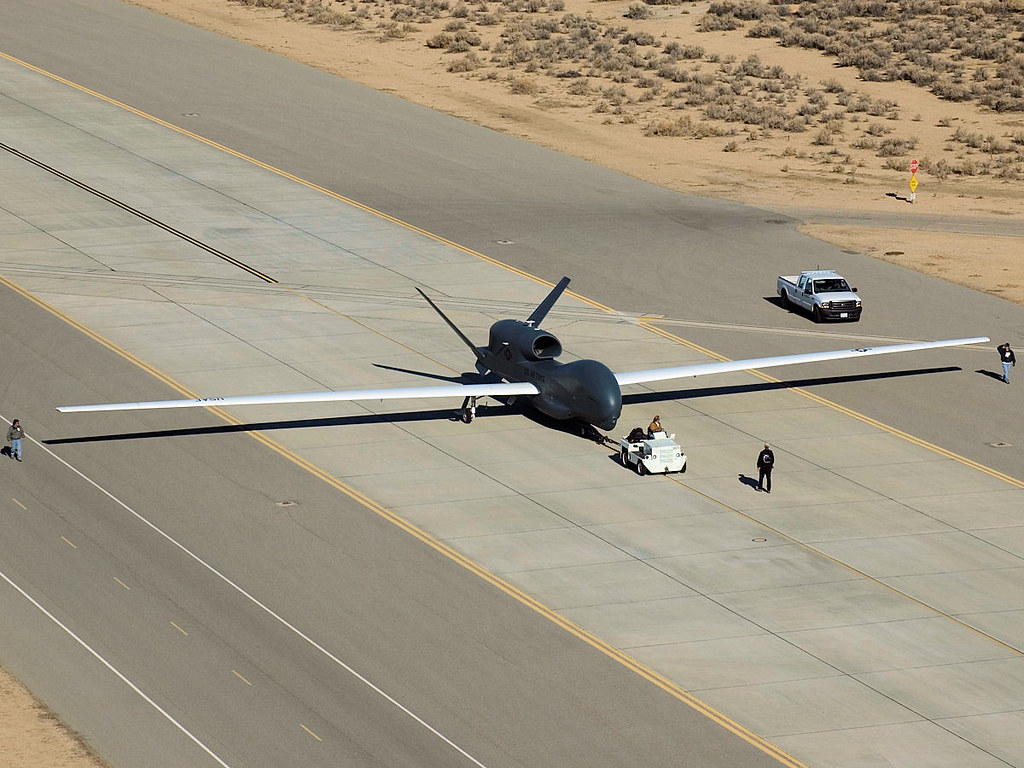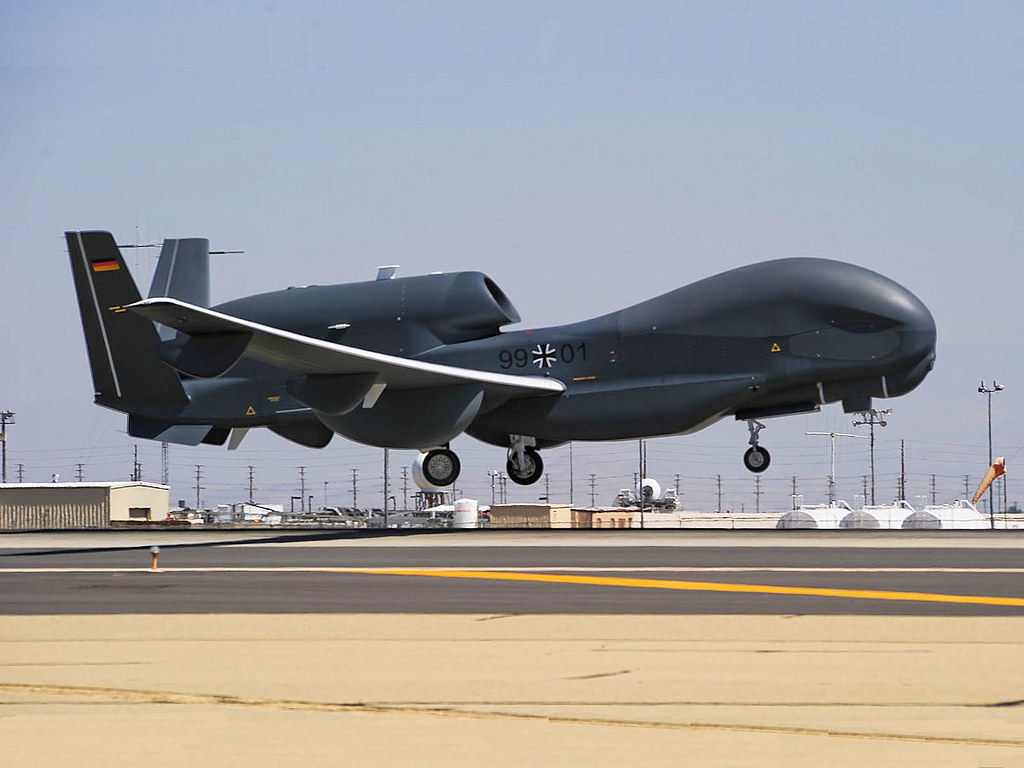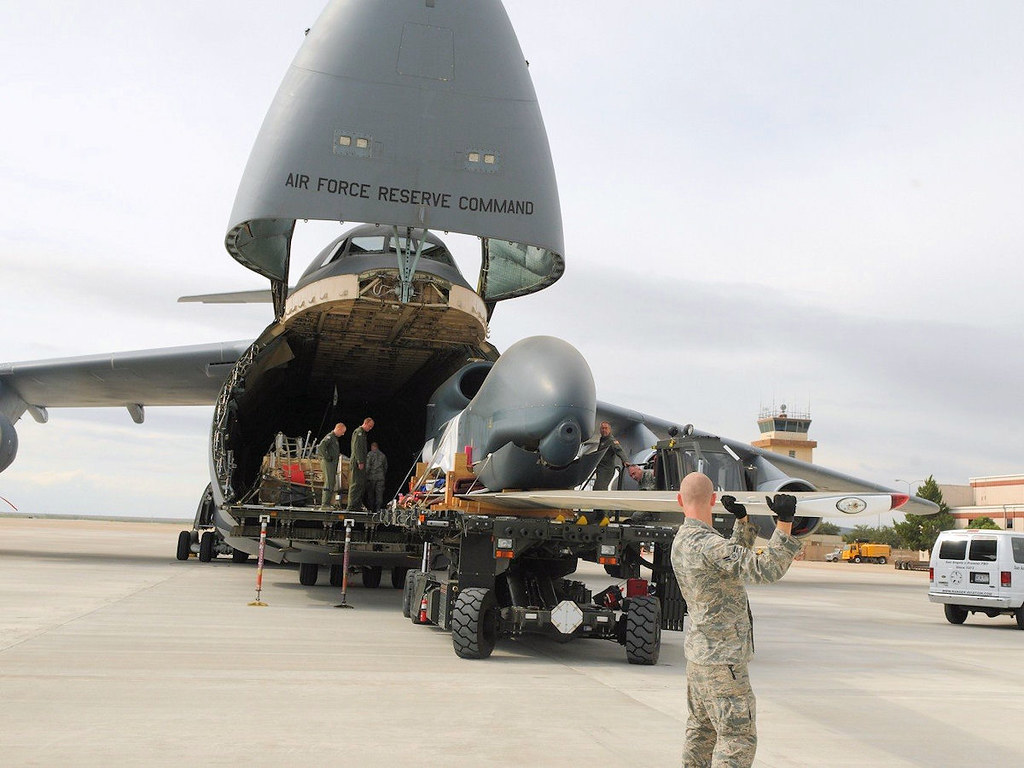US Navy MQ-4C Triton Aircraft
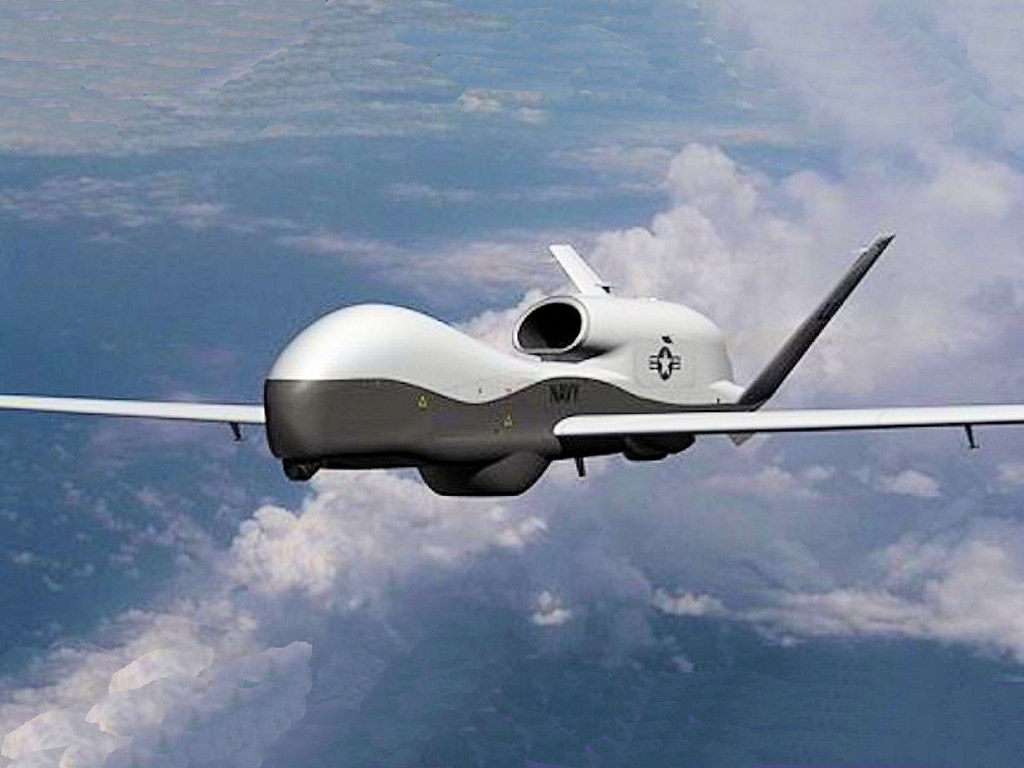
The MQ-4C Triton is the US Navy's new Broad-Area Maritime Surveillance (BAMS) aircraft. It is an unmanned air vehicle (UAV) that is based on the US Air Force's RQ-4 Global Hawk of which approximately 50 have been built. They both are very similar in appearance, but the Navy's aircraft has a significantly stronger wing . Whereas the USAF aircraft remains at high altitude, it is required for the Navy aircraft to ascend to 50,000+ feet, but be able to regularly descend to as low as 10,000 feet for better and further discrimination. So it's wings are designed to be stronger to allow for these fairly rapid changes in altitude. The wing is also designed for more anti-icing capabilities, lightning strike protection, and for better small item impact protection.
In addition, the US Navy aircraft can be fitted with a different sensor fit befitting the maritime environment as required.

The aircraft was ased on the US Navy Broad-Area Maritime Surveillance (BAMS) aircraft competition that was awarded to Northrup Grumman on April 22, 2008. The BAMS contract was worth $1.16 billion. Lockheed Martin, who had also competed for the contract, filed a formal protest with the U.S. Government Accountability Office (GAO). Ultimately, on August 11, 2008 the GAO ruled in favor of Northrup Grumman and upheld the the Navy’s award. In September 2010, the US Navy designated the BAMS aircraft as the MQ-4C, Triton.
The first MQ-4C aircraft based on a RQ-4 Global Hawk was completed to the contract specifications in 2012 and flew that year. Two aircraft were converted to the MQ-4C standard. The first new, purpose built, MQ-4C flew on May 22, 2013. The second purpose built MQ-4C Triton aircraft flew on October 16, 2014, making a total of four aircraft available for test.

The MQ-4C is designed to give high altitude, long-loiter intelligence, surveillance and reconnaissance (ISR) in the maritime and littoral regions, and to seamlessly communicate that information in real time to other US Navy assets, which would include P-8A
Poseidon maritime patrol aircraft, to E-2D Advanced Hawkeye Airborne Electronic Warning and Command (AEW&C) aircraft, to Naval vessels, naval bases, or to US Navy strike aircraft like the new F-35C 5th generation stealth aircraft as required.
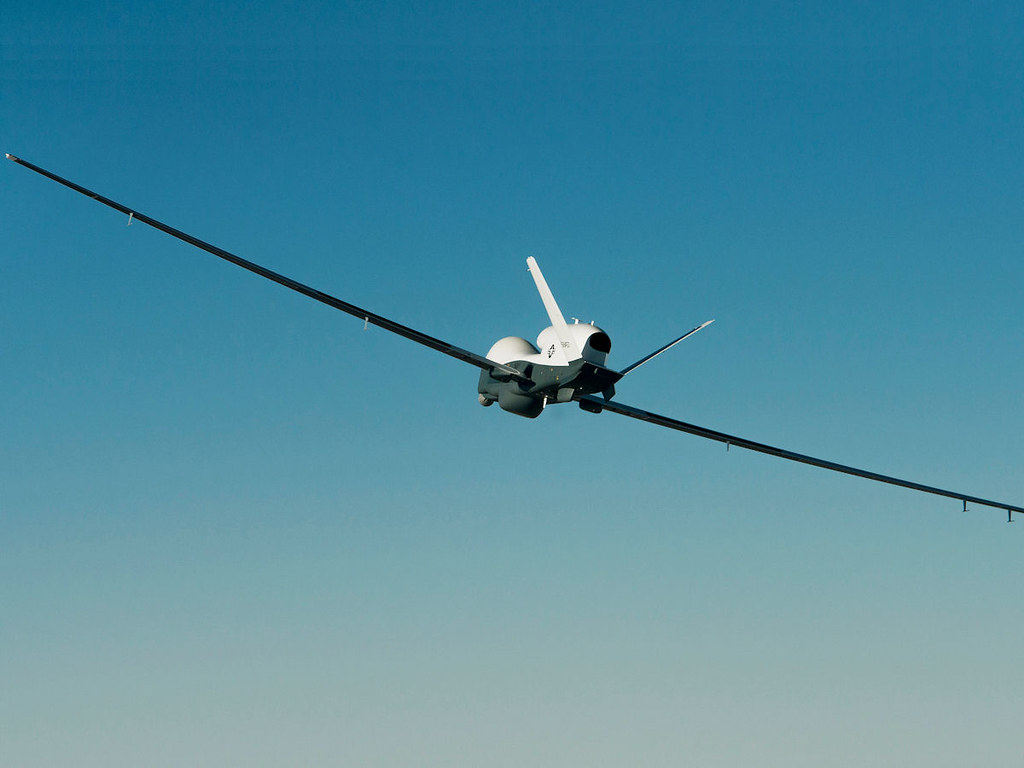
As these aircraft are on station, they will provide real-time communications, surveillance, reconnaissance and even targeting as necessary. They are also capable of acting as a network relay and data fusion center, receiving and transmitting communications and information from around particular theaters of operation between the various sources not within line-of-sight of each other. As stated, this would include what ships, aircraft, and land sensors are seeing and then broadcasting through data-links and fuse that information together to create a common "picture" of the battle space, which it then transmits to those requiring the information. This capability greatly increases interoperability, situational awareness, targeting efficiency, and sensor clarity, while also providing an alternative to satellite-based communications systems
Currently, the four aircraft are being tested. Initial Operational Capability is planned for early 2017. Sixty-eight aircraft are planned, though the reliability and availability of the test aircraft is showing that the US Navy may be able to buy less aircraft and still maintain the number of aircraft on station it desires, while fulfilling testing, training, and maintenance requirements.
The MQ-4C aircraft have impressive characteristics:
Length: 47.6 ft in (14.5 m)
Wingspan: 130.9 ft in (39.9 m)
Height: 15.3 ft in (4.6 m)
Gross weight: 32,250 lb (14,630 kg)
Powerplant: 1 × Rolls-Royce AE 3007 turbofan, 6,495-8,917 lbf (28.9-39.7 kN)
Maximum speed: 357 mph (575 km/h)
Endurance: 24+ hours on station
Service ceiling: 60,000 ft (18,288 m)
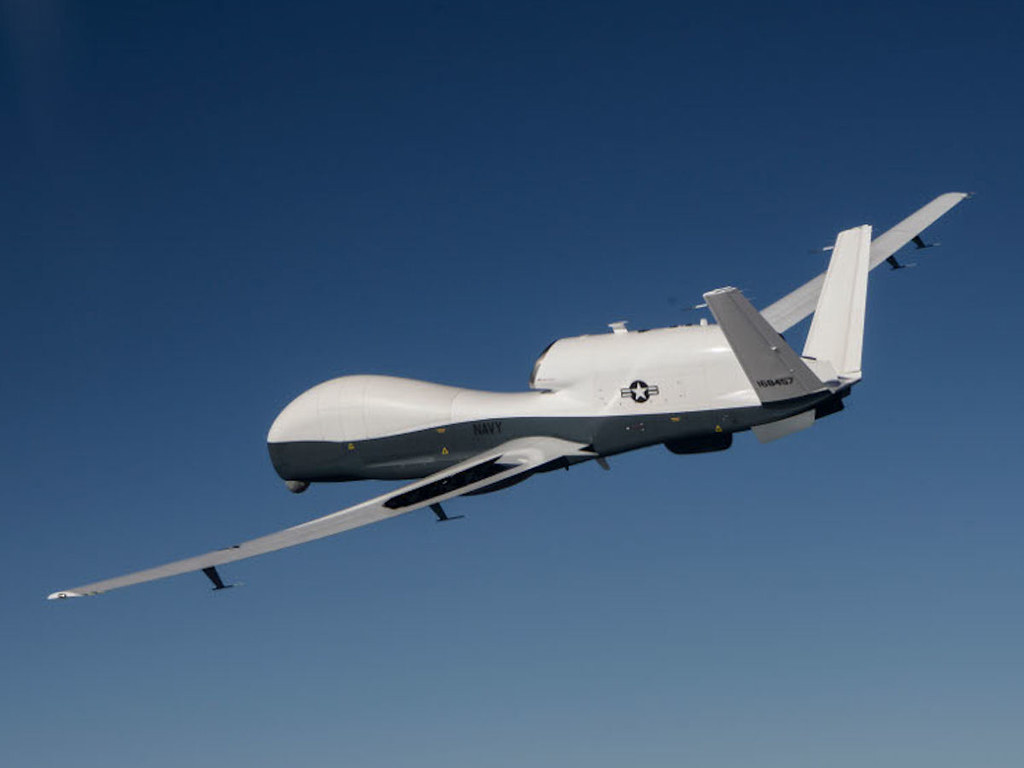

In addition, the US Navy aircraft can be fitted with a different sensor fit befitting the maritime environment as required.

The first MQ-4C aircraft based on a RQ-4 Global Hawk was completed to the contract specifications in 2012 and flew that year. Two aircraft were converted to the MQ-4C standard. The first new, purpose built, MQ-4C flew on May 22, 2013. The second purpose built MQ-4C Triton aircraft flew on October 16, 2014, making a total of four aircraft available for test.

Poseidon maritime patrol aircraft, to E-2D Advanced Hawkeye Airborne Electronic Warning and Command (AEW&C) aircraft, to Naval vessels, naval bases, or to US Navy strike aircraft like the new F-35C 5th generation stealth aircraft as required.

Currently, the four aircraft are being tested. Initial Operational Capability is planned for early 2017. Sixty-eight aircraft are planned, though the reliability and availability of the test aircraft is showing that the US Navy may be able to buy less aircraft and still maintain the number of aircraft on station it desires, while fulfilling testing, training, and maintenance requirements.
The MQ-4C aircraft have impressive characteristics:
Length: 47.6 ft in (14.5 m)
Wingspan: 130.9 ft in (39.9 m)
Height: 15.3 ft in (4.6 m)
Gross weight: 32,250 lb (14,630 kg)
Powerplant: 1 × Rolls-Royce AE 3007 turbofan, 6,495-8,917 lbf (28.9-39.7 kN)
Maximum speed: 357 mph (575 km/h)
Endurance: 24+ hours on station
Service ceiling: 60,000 ft (18,288 m)


